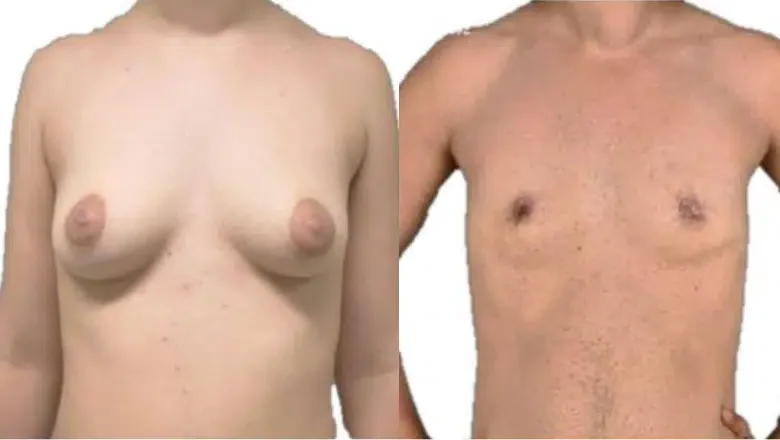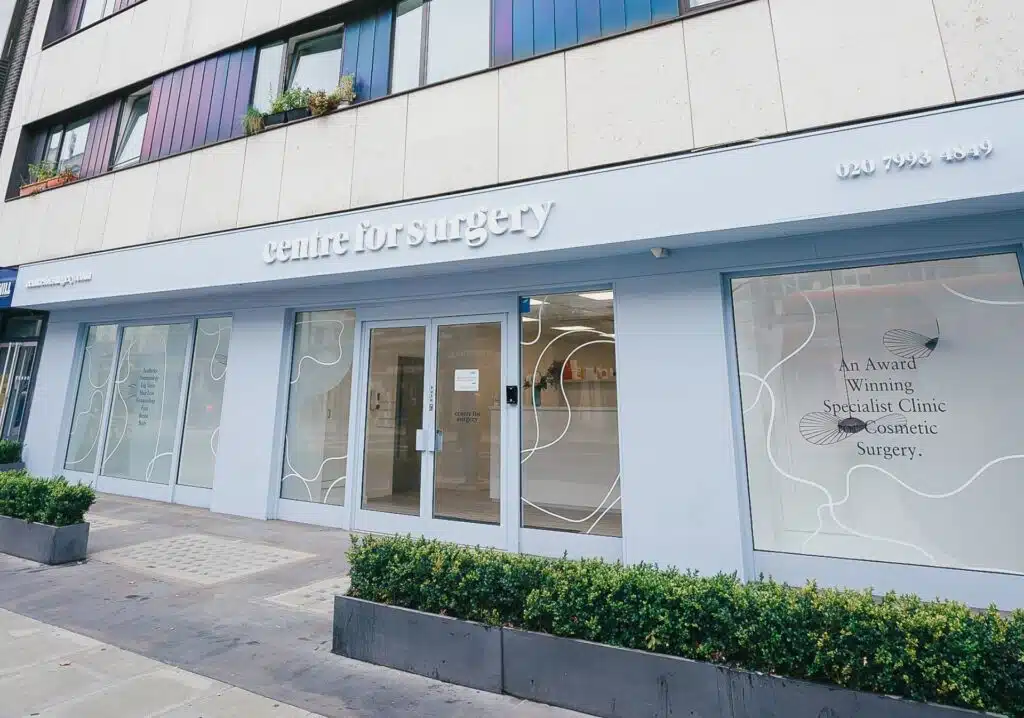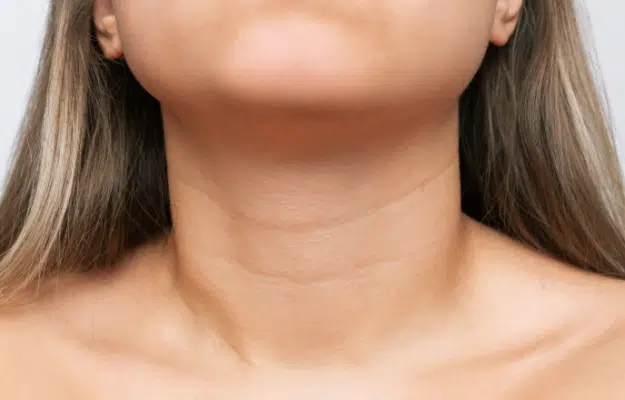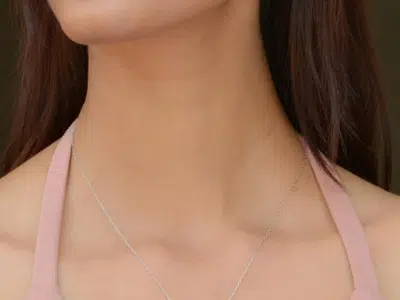Keyhole Top Surgery London & UK
Discover the path to a more affirming and comfortable self with keyhole top surgery, offering a natural chest contour and minimal scarring for your gender-affirming journey
Embarking on a journey towards gender affirmation is a significant step, and we at Centre for Surgery understand the profound impact this decision has on your life. Our dedicated team of expert plastic surgeons and compassionate support staff are here to guide you through every stage of the process.
Keyhole top surgery is a type of FTM Top surgery we specialise in, helping transgender men and non-binary individuals achieve a chest appearance that aligns with their gender identity. By utilising a less invasive approach than the traditional double incision mastectomy, keyhole surgery offers less scarring and quicker recovery times, without compromising the results.
RELATED: Which FTM/N Top Surgery Procedure Is Right For Me?
Our surgeons at Centre for Surgery have extensive experience in performing keyhole top surgeries. They are committed to providing personalised, high-quality care, tailoring each procedure to suit the unique needs of the individual. By combining technical expertise with a deep understanding of the transformative power of gender confirmation surgery, our surgeons help patients achieve their desired outcomes.
What is Keyhole Top Surgery?
Keyhole top surgery, sometimes known as periareolar top surgery or keyhole mastectomy, is a highly specialised gender-affirming procedure that is designed to sculpt a more masculine chest appearance. Undertaken as an outpatient procedure, this method usually lasts approximately two hours, encompassing the entirety of the surgical journey from pre-operation to post-operation.
RELATED: Is A Keyhole Mastectomy The Best Option For Me?
The core principle of the keyhole technique involves making a small incision around the border of the areola. Through this carefully created opening, breast tissue is delicately extracted, leaving the chest area flatter and more aligned with the patient’s gender identity.
A distinctive feature of keyhole top surgery is its ability, in certain cases, to preserve the patient’s natural sensitivity in the nipple. In contrast to other chest reconstruction techniques, the areola and nipple stalk are left undisturbed during a keyhole mastectomy. Depending on your specific circumstances and the surgeon’s professional assessment, the size of your nipples may or may not be altered during the procedure.
One of the impressive benefits of a keyhole mastectomy is the prospect of a speedier recovery time coupled with minimal scarring. The surgical incision, typically about half the length of the areola’s border, is often barely discernible post-operation. Furthermore, as this technique doesn’t necessitate grafting, it reduces the potential for additional scarring.
A potential drawback of this procedure is that it doesn’t remove the inframammary fold (IMF)—the natural boundary delineating the chest and the breast. As a result, this surgery is often recommended for patients with smaller chests and excellent skin elasticity.
As with any medical procedure, it’s crucial to have a comprehensive discussion with a qualified surgeon to determine if keyhole top surgery is the right choice for you. At Centre for Surgery, our expert team is committed to guiding you through this important decision, providing the advice, care, and support you need during your transformative journey.
Dr Spiros Vlachos – Leading Specialist in Keyhole Top Surgery
Dr Spiros Vlachos is a highly skilled and experienced specialist in masculinising chest surgery, offering advanced techniques tailored to each patient’s unique needs. With expertise in all types of top surgery, he performs double incision mastectomy with nipple grafts, nipple-sparing techniques, periareolar mastectomy, and the inverted T approach for optimal results.
Renowned for his precision and patient-centred approach, Dr Vlachos utilises the latest keyhole top surgery techniques, ensuring minimal scarring and natural contours for a masculine chest. His meticulous surgical skills and commitment to excellence have made him a trusted name in gender-affirming surgery.
Keyhole Mastectomy Before & After Photos
Benefits of Keyhole Mastectomy
Keyhole top surgery, also known as keyhole mastectomy, offers a range of benefits that make it an attractive option for many individuals seeking gender-affirming surgery. Here are some of the main advantages:
Minimal Scarring
As keyhole surgery only requires a small incision around the border of the areola, the resulting scars are usually less noticeable than with other types of top surgery. This minimal scarring can lead to a more aesthetically pleasing outcome and may help reduce body image concerns.
Preservation of Nipple Sensation
Unlike other top surgery methods where the nipple and areola complex are repositioned, in keyhole surgery, they are usually left intact. This means there’s a higher likelihood of maintaining natural nipple sensation after surgery.
Faster Recovery
Keyhole top surgery is less invasive than other techniques, leading to a potentially quicker and smoother recovery process. The smaller incisions typically heal faster, resulting in less overall trauma to the body.
Less Invasive
This technique is less invasive as it doesn’t involve extensive cutting or tissue removal. It also avoids nipple grafting, which can be a more complex and delicate procedure.
Natural Appearance
With keyhole top surgery, the natural position of the nipple and areola is preserved. The small incision made during surgery is often concealed by the natural border of the areola, leading to a natural-looking chest contour.
Shorter Surgery Time
Keyhole top surgery generally requires less time in the operating room compared to more extensive double incision mastectomy.
Keyhole top surgery isn’t suitable for everyone. This method is typically most effective for individuals with small to medium-sized chests and good skin elasticity.
Am I suitable for Keyhole Top Surgery?
Determining your suitability for keyhole top surgery involves several factors that your surgeon should consider and discuss. Indeed, because keyhole top surgery does not involve the removal of excess skin, it tends to be most appropriate for those with smaller chests and excellent skin elasticity.
Here are a few key considerations that could indicate you’re a good candidate for keyhole top surgery:
Small to Medium Chest Size
Keyhole top surgery is typically most effective for individuals with smaller chests, usually falling within the A-B cup range. This is because the procedure involves the removal of breast tissue through a small incision, and it can be challenging to remove larger amounts of tissue using this technique.
Good Skin Elasticity
The skin’s ability to retract and adjust to the new chest contour after surgery is crucial for achieving optimal results from a keyhole mastectomy. Individuals with good skin elasticity are likely to see better results as their skin can effectively reshape itself post-surgery.
Overall Health
As with any surgical procedure, being in good overall health can reduce the risk of complications and promote a smoother recovery. This includes not smoking (or being willing to quit for a set period before and after surgery), maintaining a stable weight, and not having any uncontrolled health conditions.
Emotional Readiness
Undergoing gender affirming surgery is a significant step, and being emotionally prepared is crucial. It’s essential to have realistic expectations about what the surgery can achieve and to understand the process of recovery.
Support Network
Having a supportive network of family and friends can greatly assist with the emotional aspects of transition and recovery. Their support can be invaluable during your surgical journey.
Preparing for Keyhole Mastectomy
Preparing for your keyhole mastectomy involves several steps designed to ensure your surgery goes as smoothly as possible and to promote optimal recovery. Here are some recommendations:
Medical Assessment
Before surgery, you’ll undergo a medical evaluation to ensure you’re in good health. This might include blood tests, a physical examination, and other appropriate health checks.
Medication Management
Discuss with your surgeon any medications you’re currently taking, including prescription drugs, over-the-counter medications, herbal supplements, and vitamins. You may need to stop or adjust the dosage of certain medications before surgery.
Smoking and Alcohol
If you smoke, you’ll need to stop several weeks before and after your surgery, as smoking can significantly impede the healing process. Excessive alcohol consumption should also be avoided in the weeks leading up to and following surgery.
Nutrition and Hydration
Ensure you’re eating a balanced diet to provide your body with the nutrients for recovery. Staying well-hydrated is also crucial.
Exercise
Regular physical activity can help improve overall health and strengthen your body for surgery. However, intense workouts should be avoided a few days before surgery.
Post-surgery Arrangements
Arrange for someone to drive you home after the surgery and, if possible, stay with you for the first 24-48 hours post-operation. Also, make sure your recovery area at home is ready with everything you might need within easy reach.
Clothing
Have loose, comfortable clothing available after the surgery. Button-up shirts are a good option as they don’t need to be pulled over your head.
Mental Preparation
Mentally preparing yourself for surgery is also essential. Consider talking to a mental health professional who can provide strategies for managing any pre-surgery anxiety and post-surgery emotions.
Keyhole Mastectomy Procedure
Keyhole top surgery, or keyhole mastectomy, is a meticulous procedure designed to create a more masculine chest contour.
RELATED: FTM/N Incision Options for Top Surgery
While each procedure can be somewhat individualised based on the patient’s unique anatomy and desired outcomes, here is a general overview of the process:
Anaesthesia
To ensure you are comfortable and feel no pain during the procedure, the surgery will typically be performed under general anaesthesia. This means you’ll be asleep throughout the operation.
Incision
Once the anaesthesia has taken effect, your surgeon will make a small incision along the border of the areola. The size of the incision is usually about one-third to one-half the diameter of the areola.
Tissue Removal
The surgeon will proceed to remove the breast tissue using a specialised surgical instrument. This is often done through a technique called liposuction, which removes fat and glandular tissue via suction. In some cases, additional small incisions may be made in the armpit area to facilitate the complete removal of the breast tissue.
Chest Contouring
After removing the breast tissue, your surgeon will evaluate the remaining chest contour and make any necessary adjustments to achieve a smooth, masculine appearance. This can include additional liposuction to ensure a uniform look.
Closure
Once the surgeon is satisfied with the result, the incision will be closed using dissolvable sutures. A bandage will then be applied to protect the surgical area and help minimise swelling and discomfort.
The entire procedure typically lasts about 1-2 hours, depending on the patient’s specific anatomy and the surgeon’s techniques. Everyone’s body and surgical needs are unique, and your procedure might vary somewhat based on your specific goals and circumstances.
Recovery after Keyhole Top Surgery
The recovery process after keyhole top surgery can vary greatly from person to person, depending on various factors such as overall health, physical condition, and the specific details of the surgical procedure. However, here are some general guidelines:
Immediate Postoperative Period
Immediately after the procedure, you will spend some time in the recovery area, where our team will closely monitor your condition. Once you’re stable, you’ll be able to go home. You’ll need someone to drive you, as you won’t be able to do so yourself.
Pain Management
Some discomfort and pain are normal after keyhole FTM surgery. Your surgeon will prescribe pain medication to help manage this. If the pain becomes severe or isn’t adequately managed by the prescribed medication, contact your surgeon immediately.
Bandages and Drains
You’ll likely have bandages covering your incisions. If drains were placed during surgery to prevent fluid accumulation, you’ll receive instructions on how to care for them. Usually, drains are removed within the first week following surgery.
Activity
You should limit your physical activity in the days immediately following your surgery. Avoid lifting heavy objects and any strenuous activities that could strain your chest. Light walking is encouraged to promote circulation. Gradually, you can return to your regular activities as instructed by your surgeon.
Follow-up Visits
You’ll have follow-up appointments with your surgeon to monitor your progress. These are crucial for ensuring a smooth recovery.
Long-term Recovery
Most patients can return to work or school within 1-2 weeks post-operation, but this can vary. Full recovery usually takes several weeks, and you may need to wear a compression garment during this period. Regular exercise can usually be resumed after 4-6 weeks, but always follow your surgeon’s advice.
Scarring
Scarring is minimal in keyhole FTM top surgery due to the small incisions. However, everyone heals differently, and some patients may experience more visible scarring.
Emotional Support
The emotional aspect of recovery is just as important as the physical. Make sure you have a support system in place, and consider seeking professional help if you experience feelings of depression or anxiety.
Risks and Potential Complications of Keyhole Mastectomy
While keyhole top surgery is considered a safe procedure with a high satisfaction rate, as with any surgical procedure, it does carry some potential risks and complications. Your surgeon will discuss these in detail with you during your consultations, but it’s important to be aware of them as you consider your surgical options.
Here are some potential risks and complications associated with keyhole top surgery:
Bleeding and Haematoma
As with any surgery, there’s a risk of bleeding during or after the procedure. A haematoma, which is a collection of blood outside the blood vessels, can also form. If this occurs, additional treatment or surgery may be necessary.
Seroma
This is the accumulation of fluid in the space where the breast tissue was removed. It may require drainage.
Infection
Postoperative infections are a risk with any surgical procedure, though they are relatively rare. Antibiotics are often given to reduce this risk.
Scarring
Even though keyhole surgery minimises scarring, some scarring is inevitable. The degree of visible scarring can vary from person to person based on individual healing processes and skin characteristics.
Nerve Damage
There’s a risk of damaging the nerves in the chest area during surgery, which could affect nipple sensation and chest sensation. While keyhole surgery often preserves nipple sensation, some loss of sensation can still occur.
Unsatisfactory Aesthetic Result
There’s always a risk that the final aesthetic result might not meet your expectations. This could include unevenness in the chest, puckering or dimpling of the skin, or a chest contour that doesn’t meet your expectations. In some cases, additional surgery might be necessary.
Anaesthesia Risks
As with any procedure that uses anaesthesia, there are potential risks and side effects, including allergic reactions and problems with breathing.
Emotional Distress
Some people might experience emotional distress or dissatisfaction after surgery. It’s crucial to have emotional and psychological support available during the process.
RELATED: What Is The Risk of Losing My Nipple In an FTM Top Surgery?
Why Choose Centre for Surgery for your Periareolar Top Surgery?
At Centre for Surgery, we believe in delivering healthcare that is respectful, affirming, and sensitive to the unique needs of every individual we serve. Recognising the widespread discrimination and challenges faced by transgender and non-binary individuals in healthcare, we’ve made it our mission to create an environment where everyone can feel safe, respected, and cared for.
We’re proud to be a leading provider of gender affirming procedures, including keyhole top surgery, for the LGBTQIA+ community. Our commitment to inclusivity extends throughout our organisation, and we strive to maintain a supportive and accepting atmosphere where all patients feel comfortable expressing their identities.
With years of experience in delivering high-quality, patient-focused care, our surgeons and healthcare professionals understand the profound impact that gender affirming surgery can have on an individual’s life. We work closely with each patient, taking the time to understand their unique journey and their goals for the surgery. Our goal is to help every patient feel more aligned with their true self.
Our team is not just known for their technical expertise, but also for their compassion, empathy, and dedication to providing the highest level of care. We are committed to treating each patient with dignity and respect, regardless of their gender identity or expression.
Transparency, communication, and respect are at the heart of our approach. We provide comprehensive education about the surgical process, recovery, and potential outcomes to ensure that our patients are well-informed and confident in their decision to proceed with surgery.
We have been privileged to witness the transformative effect that gender affirming surgery can have on our patients’ lives and self-esteem. We’re honoured by the trust placed in us by the hundreds of transgender and non-binary individuals who have chosen Centre for Surgery for their procedures.
We look forward to continuing our work in providing affirming, compassionate, and expert care for the LGBTQIA+ community, both in the UK and around the world. At Centre for Surgery, you can expect a welcoming environment, a dedicated team, and exceptional results.
FAQs
-
What is periareolar top surgery?Periareolar top surgery, also known as periareolar mastectomy or keyhole mastectomy, is a gender affirming surgical procedure for transgender men and non-binary individuals seeking to achieve a more masculine chest contour.
In periareolar top surgery, the surgeon makes a circular incision around the border of the areola (the pigmented area surrounding the nipple). Through this incision, breast tissue is removed to create a flatter chest appearance. The nipple and areola complex are usually preserved and repositioned to align with the new chest contour.
This technique is most suitable for individuals with smaller breasts and good skin elasticity, as it relies on the ability of the skin to retract and conform to the new chest shape. It is particularly beneficial for those who desire nipple preservation and the potential for maintaining nipple sensation.
Periareolar top surgery is typically performed under general anaesthesia and is considered an outpatient procedure, meaning that patients can usually return home the same day. Recovery time can vary, but most individuals can resume normal activities within a few weeks, with specific guidelines provided by the surgeon. -
Can I get a nipple reduction at the same time as keyhole top surgery?Yes, it is possible to undergo a nipple reduction procedure in conjunction with keyhole top surgery. Many individuals who choose keyhole top surgery also desire nipple resizing or repositioning to achieve their desired chest appearance.
During keyhole top surgery, the nipples are typically left intact, allowing for their preservation and potential resizing. The surgeon can modify the size, shape, or position of the nipples to create a more proportional and aesthetically pleasing outcome.
It's essential to discuss your specific goals and concerns regarding nipple reduction with your surgeon during your pre-operative consultations. They will evaluate your individual anatomy and advise on the feasibility of combining these procedures. They can also provide guidance on the potential risks, recovery process, and expected outcomes.
Combining nipple reduction with keyhole top surgery can be an effective way to achieve your desired chest appearance in a single surgical session. However, it's important to have a thorough discussion with your surgeon to ensure that your expectations align with what can be realistically achieved through the procedures. -
Is keyhole top surgery painful?Keyhole top surgery is a surgical procedure, and it is normal to experience some level of discomfort or pain during the recovery process. However, the level of pain can vary from person to person and depends on factors such as individual pain tolerance, the extent of the surgery, and the body's healing response.
It's important to note that steps are taken to manage pain and keep you as comfortable as possible. Immediately following the surgery, you will likely experience some soreness, swelling, and tenderness in the chest area. Your surgeon will prescribe appropriate pain medications to help manage any post-operative discomfort.
Over time, as your body heals, the pain and discomfort should gradually subside. Following your surgeon's post-operative instructions, such as wearing a compression garment, taking prescribed pain medications as directed, and practicing proper wound care, can all contribute to a more comfortable recovery. -
What is the best sleeping position after keyhole top surgery? After keyhole top surgery, finding a comfortable sleeping position is crucial for optimal healing and comfort. Here are some recommendations for the best sleeping positions:
Back Sleeping: Sleeping on your back is often the recommended position during the initial recovery period. It helps minimise pressure on the chest area and allows for better support of the surgical site. Place a few pillows behind your upper back and head to elevate your upper body slightly. This can help reduce swelling and provide support.
Side Sleeping with Pillows: If you prefer to sleep on your side, it's important to ensure that you do not put direct pressure on the chest area. Place a pillow or cushion under your arm on the side opposite to the surgical site. This can help relieve pressure and provide support. Place another pillow between your knees to keep your spine aligned and prevent discomfort.
Avoid Stomach Sleeping: It is generally advised to avoid sleeping on your stomach after keyhole top surgery, as it can put pressure on the chest area and interfere with the healing process. Stomach sleeping may cause discomfort and strain the incision site.
Pillow Support: Use pillows strategically to support your body and maintain a comfortable position. You can place pillows under your arms, behind your back, or between your knees for added support and comfort. -
What do keyhole top surgery scars look like?Scarring after keyhole top surgery can vary from person to person and is influenced by factors such as individual healing patterns and skin type. However, the goal of keyhole top surgery is to minimise visible scarring as much as possible. Here's a general description of what you can expect:
Incision Scars: Keyhole top surgery involves a circular incision made around the border of the areola. The scars typically follow this circular pattern. They are usually small and discreet, blending with the natural transition between the areola and the surrounding skin. The size of the scars can vary depending on factors such as the size of the areola and the amount of tissue removed.
Scarring Visibility: With time and proper care, the incision scars tend to fade and become less noticeable. They may appear red, raised, or slightly bumpy initially, but they usually flatten and fade over the course of several months to a year. Proper wound care and scar management techniques, as recommended by your surgeon, can help minimise scar visibility.
Individual Variations: It's important to note that everyone's healing process and scarring tendencies are unique. Some individuals may have a predisposition to more visible scarring, while others may have a natural ability to develop less noticeable scars. Your surgeon will assess your specific case and provide guidance on scar management techniques to optimise your healing process.














